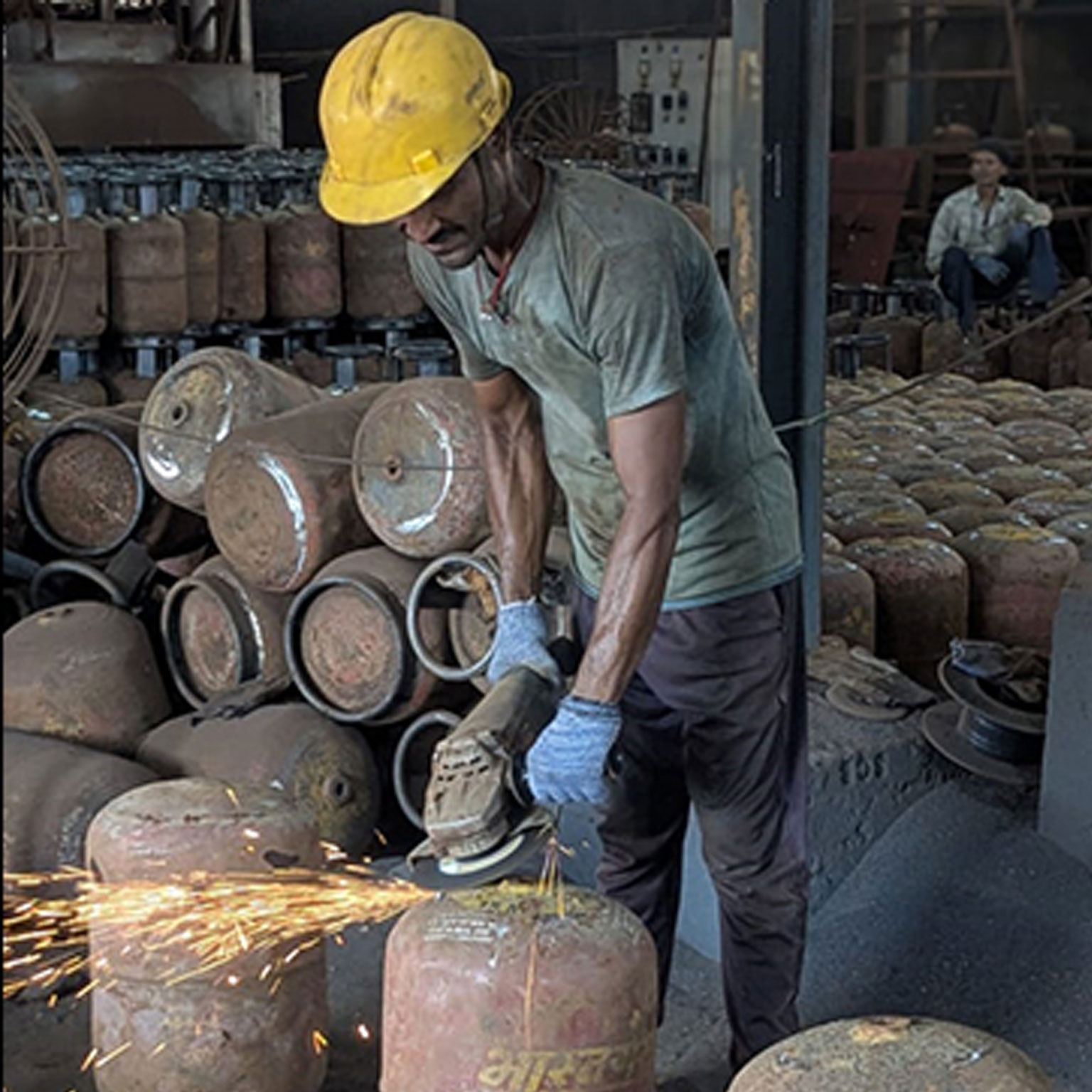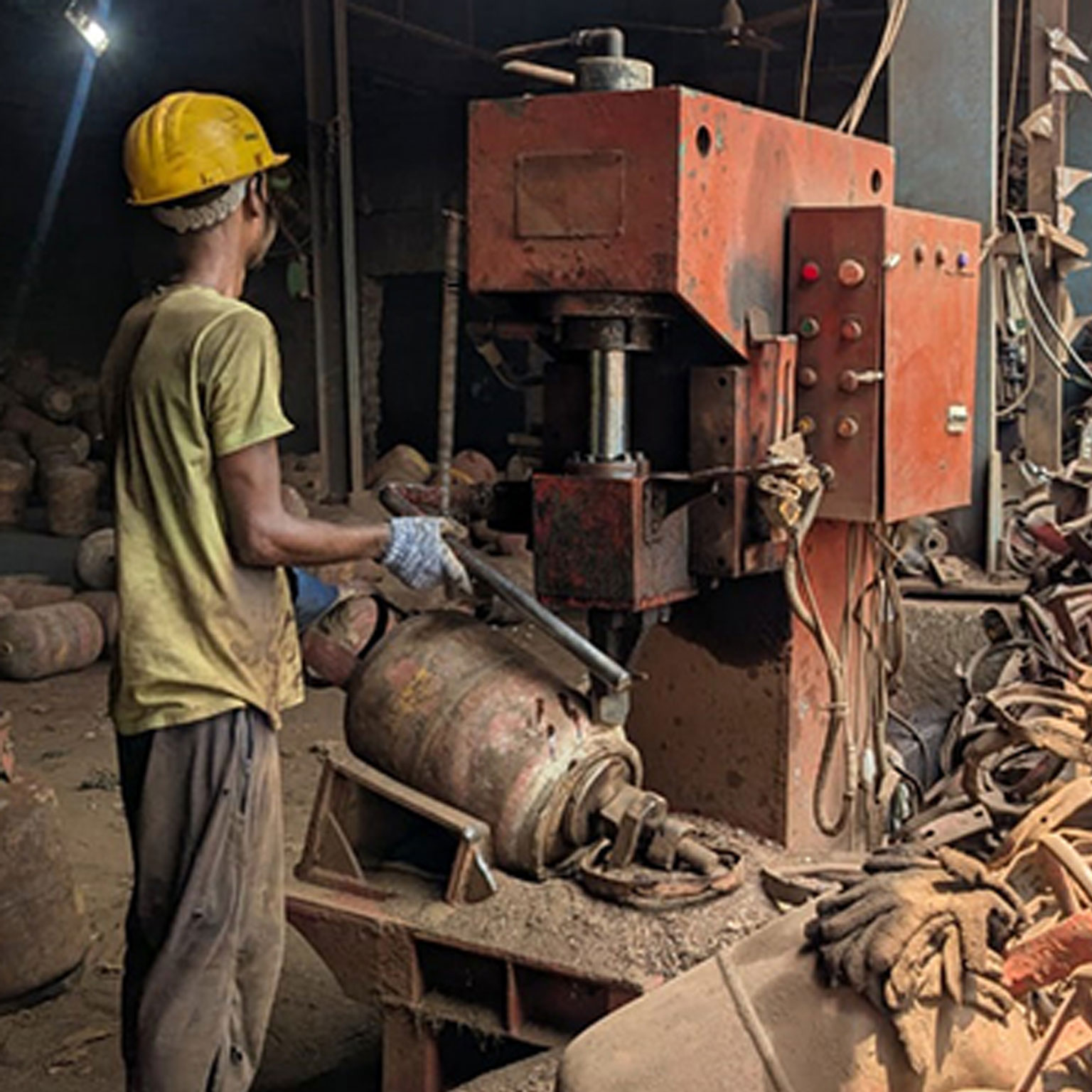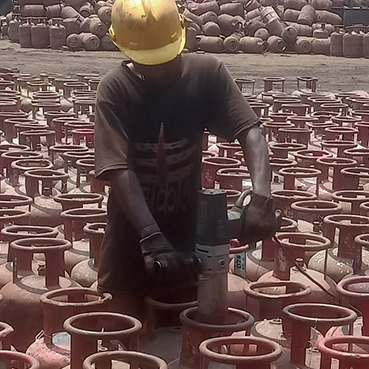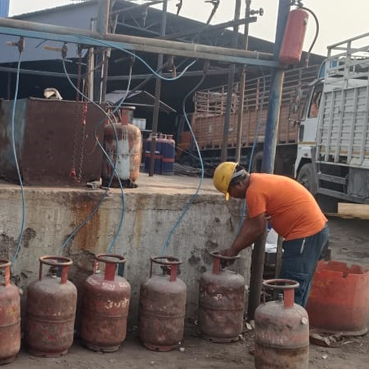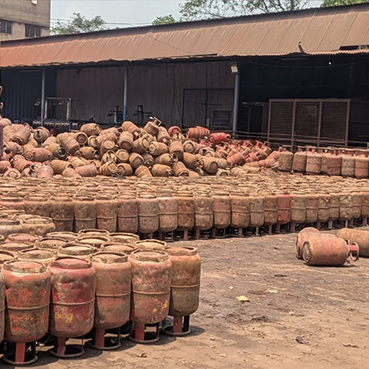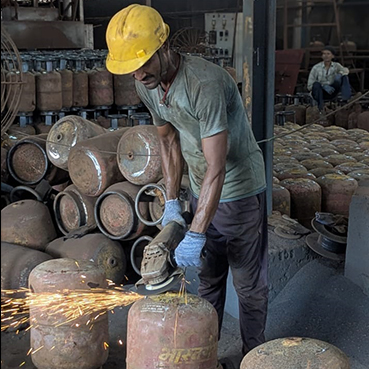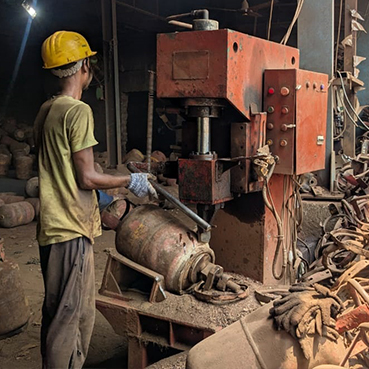Cylinder Hot Repairing
Re-Conditioning of Used LPG Cylinders
(Welded Low Carbon Steel Cylinders Exceeding 5 Litre Water Capacity For Low-Pressure Liquefiable Gases - Requirements for Inspection and Reconditioning of Used LPG Cylinders - IS 13258:2014)
- 11.7 Litre - water capacity (5 kg) - Used for Domestic & Commercial Purpose.
- 33.3 Litre - water capacity (14.2 kg) - Used for Domestic Purpose.
- 44.5 Litre - water capacity (19 kg) - Used for Commercial Purpose.
Key Steps in Cylinder Hot Repairing:
-
Inspection & Testing
-
The cylinder is thoroughly inspected for external and internal damages.
-
A hydrostatic test may be performed to check for leaks and structural weaknesses.
-
-
Cleaning & Surface Preparation
-
Rust, paint, and debris are removed using sandblasting or chemical treatment.
-
The cylinder is dried completely to ensure proper adhesion of coatings.
-
-
Heating & Structural Repair
-
The cylinder is heated in a controlled environment to reshape dents and remove minor deformations.
-
Welding or metal filling is done for cracks or severe damages.
-
-
Pressure Testing & Safety Check
-
The cylinder undergoes a pressure test to confirm its ability to withstand required operating pressures.
-
It is inspected for any gas leaks or weakened spots.
-
-
Repainting & Coating
-
A protective coating is applied to prevent rust and corrosion.
-
The cylinder is labeled with necessary markings, such as manufacturing details, repair date, and safety certifications.
-
-
Final Approval & Certification
-
Once the cylinder passes all tests, it is certified as safe for reuse.
-
It is then returned to service for industrial, commercial, or domestic use.
-
